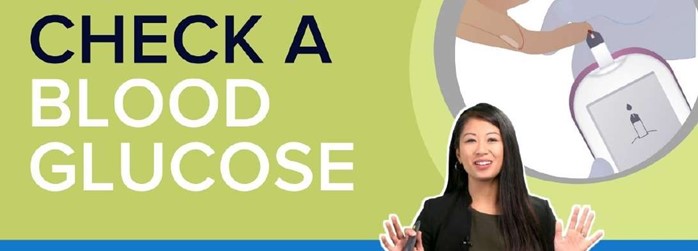A nurse accidentally administers the medication metformin instead of metoprolol to a client.
Which of the following actions should the nurse take?
Collect the client's uric acid level.
Obtain the client's HDL level.
Check the client's glucose level.
Monitor the client's thyroid function levels.
The Correct Answer is C
Metformin is an antidiabetic agent used to treat type 2 diabetes mellitus.

It works by decreasing carbohydrate absorption from the gut, increasing glucose uptake in peripheral tissues in the presence of insulin, and reducing hepatic gluconeogenesis.
In normal patients, metformin ingestion is not associated with hypoglycemia.
However, it is still important to check the client’s glucose level to ensure that it is within a safe range.
Choice A is wrong because collecting the client’s uric acid level is not necessary after accidental administration of metformin.
Choice B is wrong because obtaining the client’s HDL level is not necessary after accidental administration of metformin.
Choice D is wrong because monitoring the client’s thyroid function levels is not necessary after accidental administration of metformin.
Nursing Test Bank
Naxlex Comprehensive Predictor Exams
Related Questions
Correct Answer is D
Explanation
Lovastatin is a lipid-lowering medication that belongs to the statin drug class.
It is used to treat and prevent coronary heart disease and hypercholesterolemia.
Before starting therapy with lovastatin, liver function tests should be performed to establish a baseline and monitor for any potential adverse effects on the liver.
Choice A is wrong because Western blot analysis, is not the correct answer because it is a laboratory technique used to detect specific proteins in a sample, not to monitor liver function.
Choice B is wrong because Pancreatic enzymes, is not the correct answer because it refers to enzymes produced by the pancreas that aid in digestion, not liver function.
Choice C is wrong because Exercise electrocardiography, is not the correct answer because it is a diagnostic test used to assess the heart’s response to physical stress, not liver function.
Correct Answer is C
Explanation
The nurse who identifies the error is responsible for completing an incident report.

Initial reports often come from the frontline personnel directly involved in an event or the actions leading up to it.
Choice A is wrong because the charge nurse is not necessarily responsible for completing an incident report.
Choice B is wrong because the quality improvement committee is not responsible for completing an incident report.
Choice D is wrong because the nurse who caused the error may not be aware of it and therefore may not be responsible for completing an incident report.
Whether you are a student looking to ace your exams or a practicing nurse seeking to enhance your expertise , our nursing education contents will empower you with the confidence and competence to make a difference in the lives of patients and become a respected leader in the healthcare field.
Visit Naxlex, invest in your future and unlock endless possibilities with our unparalleled nursing education contents today
Report Wrong Answer on the Current Question
Do you disagree with the answer? If yes, what is your expected answer? Explain.
Kindly be descriptive with the issue you are facing.
